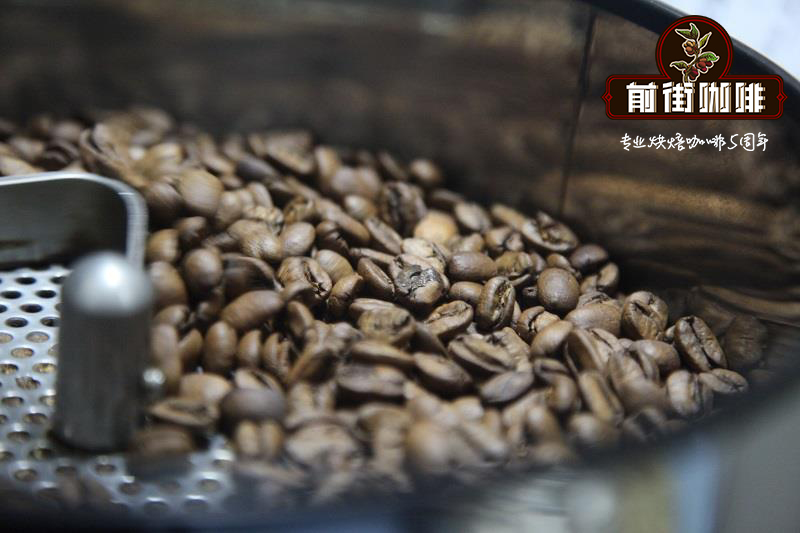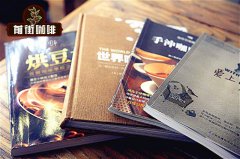Which brand of Indian Malaba coffee is good? how to use Indian drip coffee? how about Indian coffee?

Professional coffee knowledge exchange more coffee bean information please follow the coffee workshop (Wechat official account cafe_style)
It is only 1600 years since coffee became the first drink in the world, so the recorded history of coffee is only 400 years similar to that of Taiwan. It is generally recognized that Africa is the home of coffee, originated in Ethiopia and spread around the world from the port of Mocha in Yemen. However, in order to prevent coffee from being grown in other countries, all coffee beans can only be exported after shelling. But Baimi was the first to spread coffee from Muslim areas of Yemen around 1600 (in the 17th century), when BaBa Budan, a pilgrimage to Mecca, hid seven germinating coffee beans in his belly and smuggled them back to his home in southwestern India, thus opening the history of the spread of coffee in the world. And this southwestern India is now the Malaba region (Indian Malaba).
Indian Malaba coffee beans, or Monsooned Malaba Coffee, have always been popular among Europeans, and this kind of wind-stained coffee is a new flavor created inadvertently. In the 17th and 18th centuries, India shipped coffee beans to Europe by sailboat, which took six months. The raw beans were placed on the bottom of the barn and absorbed the moisture and salty taste of the sea. The raw beans arrived in Europe and had deteriorated. The color changed from dark green to the yellowish brown of rice. The acidity of the coffee almost disappeared, but it unexpectedly developed a strong nutty and shell flavor. It tasted full, with a bit of black rice tea flavor. Nordic people like this kind of golden alternative coffee very much. In 1869, the opening of the Suez Canal and the advent of steamships shortened the sailing time between India and Europe, but customers began to complain that Indian coffee was "stale", losing its charming yellowish and nutty flavor, and orders plummeted. Indian exporters began to study the solution. The original coffee shipped to Europe took more than half of the time to become "transformed" and lost its original flavor, so exporters thought of the salty and wet environment blown by the Indian ocean along the coast of Malaba in southwestern India every year from late May to September. After several experiments, it was made similar to the old golden coffee without acid, so it was named "monsoon coffee", commonly known as wind-stained coffee.
The wind-stained coffee needs to be made with sun-dried beans, and the wind-stained factory faces to the west in order to catch the salty and wet monsoon blowing from the southwest. Coffee beans are laid flat in the wind-soaked field, the windows are all open, and the wind stains can be put into the bag to a certain extent, but the coffee beans cannot be filled too full, and the coffee bags should not be piled too dense to avoid mildew, and it is time-consuming and labor-consuming to pour out coffee beans and replace sacks from time to time to avoid mildew. The weathering period is about 12 to 16 weeks, and after it is ripe, it has to be fumigated to drive out the weevil, and finally the beans are screened manually to pick out the failed beans that have not turned golden. After three to four months of wind stains, the volume of green coffee beans increased by one to two times, the weight and density decreased, the moisture content was about 13%, and the quality and quantity changed significantly.
When I entered 5kg Monsooned Malaba this time, the boss said a whole bag of 50kg sacks $200/kg (ICO price soared recently or $150/kg could buy it). Finally, I told the boss that 50kg was just one less pocket plastic bag-- as a result, I hadn't come home yet-- my wife had helped me carry 15kg beans home.
The monsoon coffee, which just arrived in Taiwan at the end of October, came back last night to make it after 5Mel-September, the seaside warehouse in southwest India.
1. Beans do not look good-look at this photo-500g can pick out 30g defective beans
two。 Beans swell a lot. In the past, it was just right to pack 1kg raw beans in chain bags, but this time it can only be packed in 500g.
3. It's not worth your life to pack raw beans separately, but it's not worth your life after baking.
Finally, refined wind-stained coffee beans.
a. Use a silver skin collection cooler to put the coffee beans on top, stir and suck the stench.
b. To pick out defective beans, 5kg picked a total of about 400g--
c. Although Typhoon Lupi turned as expected by the Meteorological Bureau, it happened to be raining heavily outside today. The humidity of this weather is in line with the salty monsoon needed for refined wind-stained coffee. (shake the body for typhoon coffee)
d. While picking beans, there is a breeze below, this is Keelung, and my home is the process of wind stains when the warehouse windows are all open.
After treatment, it was really good value for money, but it took 5kg 5 hours to deal with it-- the waist is so sour-- the but beans are not sour at all.
Ps. In fact, after roasting Malaba coffee, it takes 3 days for the flavor of Malaba coffee to develop well-- taste it slowly in two days.
In the early days, sailing ships sent coffee from India to Europe, and the vegetarian monsoon coffee washed by the sea breeze in the cabin is no longer seen. At present, the wind-stained coffee processed by bean merchants in the warehouse on the coast of Malaba in southwestern India still has its flavor. It's just beans-- after today's special treatment-- I can only say that I haven't had this kind of coffee in two years-- great!
Indian coffee bean brand recommendation
The Indian coffee beans baked in Qianjie Coffee-Wind-stained Malaba Coffee are fully guaranteed in terms of brand and quality. And more importantly, the performance-to-price ratio is extremely high, a pack of half a pound 227 grams, the price is only about 80 yuan. According to the calculation of 15 grams of powder per cup of hand-brewed coffee, 15 cups of coffee can be made in a bag, and each cup of coffee costs only about 5 yuan, which is very cost-effective for coffee shops to sell dozens of yuan a cup.
Qianjie coffee: Guangzhou bakery, the store is small but a variety of beans, you can find a variety of unknown beans, but also provide online store services. Https://shop104210103.taobao.com
Important Notice :
前街咖啡 FrontStreet Coffee has moved to new addredd:
FrontStreet Coffee Address: 315,Donghua East Road,GuangZhou
Tel:020 38364473
- Prev

What coffee do you recommend in India? what do you mean by Indian coffee? how to use Indian coffee
Professional coffee knowledge exchange more coffee bean information please follow the coffee workshop (Wechat official account cafe_style) Indian style coffee: the history of coffee cultivation in India, according to the story is that the Islamic pilgrim Baba Budan first brought coffee seedlings out of the Arab world in 1650 and successfully planted them in Chickmagalur (located in Karnataka district) in South India!
- Next

Which brand of Indian coffee is good? the origin of Indian coffee beans? how much is Indian coffee beans per jin?
Professional coffee knowledge exchange more coffee bean information Please follow the coffee workshop (official Wechat account cafe_style) when it comes to Asian coffee, most people will first think of Indonesian gold Manning or Toraya, or Vietnamese coffee or Lao coffee, as well as recently rammed up Taiwan coffee, Yunnan coffee and so on. Indian coffee has a long history, and it is also Asia.
Related
- Does Rose Summer choose Blue, Green or Red? Detailed explanation of Rose Summer Coffee plots and Classification in Panamanian Jade Manor
- What is the difference between the origin, producing area, processing plant, cooperative and manor of coffee beans?
- How fine does the espresso powder fit? how to grind the espresso?
- Sca coffee roasting degree color card coffee roasting degree 8 roasting color values what do you mean?
- The practice of lattes: how to make lattes at home
- Introduction to Indonesian Fine Coffee beans-- Java Coffee producing area of Indonesian Arabica Coffee
- How much will the flavor of light and medium roasted rose summer be expressed? What baking level is rose summer suitable for?
- Introduction to the characteristics of washing, sun-drying or wet-planing coffee commonly used in Mantenin, Indonesia
- Price characteristics of Arabica Coffee Bean Starbucks introduction to Manning Coffee Bean Taste producing area Variety Manor
- What is the authentic Yega flavor? What are the flavor characteristics of the really excellent Yejasuffi coffee beans?

